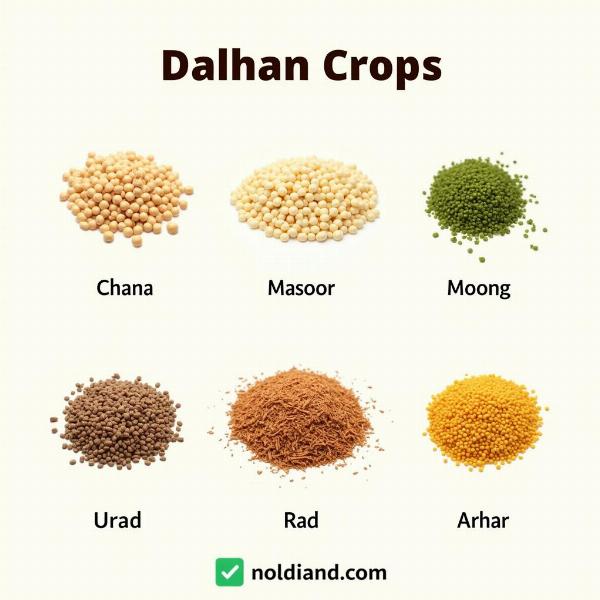Understanding the meaning of “leguminous crop” in Hindi is crucial for anyone involved in Indian agriculture, trade, or even culinary practices. Leguminous crops, known as “dalhan” (दलहन) in Hindi, are a cornerstone of Indian diets and play a significant role in the nation’s agricultural landscape. This article will delve into the meaning, significance, and various aspects of leguminous crops in India.
What Does “Leguminous Crop” Mean in Hindi?
The Hindi word for “leguminous crop” is “dalhan” (दलहन). This term encompasses a broad category of plants belonging to the Fabaceae family, also known as legumes or pulses. These plants are characterized by their ability to fix nitrogen in the soil, enriching its fertility. They are a primary source of protein in vegetarian diets and are essential for maintaining soil health.
Importance of Dalhan in Indian Agriculture
Dalhan crops are a vital component of Indian agriculture for several reasons. They contribute significantly to food security, providing a readily available and affordable source of protein for a large population. They also improve soil health by fixing nitrogen, reducing the need for synthetic fertilizers. Furthermore, dalhan crops offer diverse cropping options for farmers and play a role in sustainable agricultural practices.
Types of Dalhan Crops in India
India boasts a rich diversity of dalhan crops, each with its unique characteristics and culinary applications. Some of the most common types include:
- Chana (चना): Also known as chickpeas or garbanzo beans, chana is a versatile legume used in various dishes.
- Masoor (मसूर): Red lentils, or masoor dal, are a staple in many Indian households, known for their quick cooking time and nutritional value.
- Moong (मूंग): Green gram, or moong dal, is easily digestible and often consumed as a light and healthy option.
- Urad (उड़द): Black gram, or urad dal, is commonly used in South Indian cuisine and is known for its rich flavor.
- Arhar (अरहर): Pigeon pea, or toor dal, is a widely consumed dal in various parts of India.
 Common Indian Leguminous Crops
Common Indian Leguminous Crops
Health Benefits of Consuming Dalhan
Dalhan crops are a powerhouse of nutrients and offer a range of health benefits. They are an excellent source of:
- Protein: Essential for building and repairing tissues.
- Fiber: Aids in digestion and promotes gut health.
- Iron: Crucial for preventing anemia.
- Vitamins and Minerals: Contribute to overall health and well-being.
Cultivation of Dalhan Crops
Dalhan cultivation practices vary depending on the specific crop and regional conditions. However, some general practices include:
- Soil Preparation: Ensuring proper soil drainage and fertility.
- Sowing: Using appropriate seeding methods and spacing.
- Irrigation: Providing adequate water supply based on the crop’s requirements.
- Pest and Disease Management: Implementing strategies to control pests and diseases.
- Harvesting: Harvesting the mature crop at the optimal time.
Conclusion
Leguminous crops, or dalhan, are integral to Indian agriculture, diet, and culture. Understanding their meaning and significance is crucial for appreciating their diverse roles and benefits. By promoting sustainable dalhan cultivation and consumption, we can contribute to food security, improved soil health, and overall well-being. meaning of leguminous in hindi provides further information on this topic.
FAQ
- What is the most commonly consumed dal in India? Toor dal (arhar) is one of the most widely consumed dals in India.
- Are all dals considered leguminous crops? Yes, all dals come from leguminous crops.
- How can I incorporate more dalhan into my diet? Dal can be incorporated into soups, stews, salads, or enjoyed as a side dish.
- Are dalhan crops good for the environment? Yes, they fix nitrogen in the soil, reducing the need for synthetic fertilizers.
- What is the difference between dal and pulses? Dal refers to the split form of pulses, while pulses refer to the whole dried seed.
- What are some common dishes made with dalhan? Dal makhani, chana masala, and sambar are some popular dishes.
- Where can I find more information about dalhan cultivation? Agricultural universities and government websites offer valuable resources.
Meaning-Hindi.in is a leading provider of professional Hindi translation services, catering to diverse industries and academic needs. We offer expert translation solutions for business and commercial documents, legal and certified documents, technical manuals, website localization, educational materials, and more. Our team of experienced translators ensures accurate and culturally sensitive translations, dalhan meaning in hindi highlighting our expertise in agricultural terminology. Need a reliable Hindi translation partner? Contact us at [email protected] or call us at +91 11-4502-7584. Meaning-Hindi.in is committed to delivering high-quality translations that bridge language barriers and facilitate effective communication. Learn more about inoculant meaning in hindi on our website.